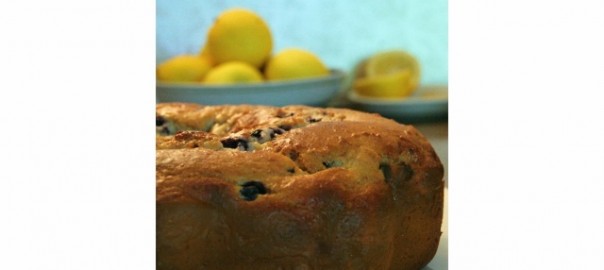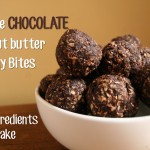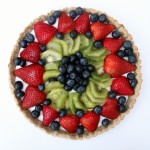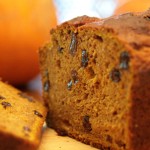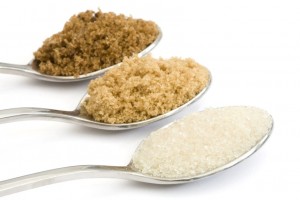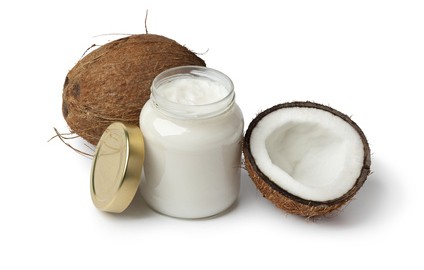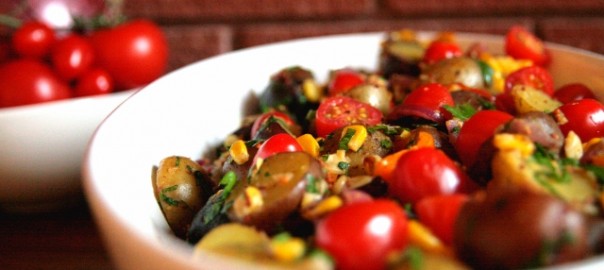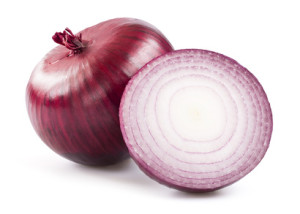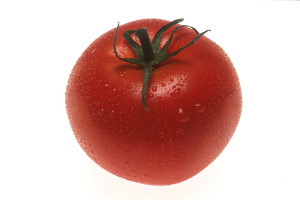This is one of my favourite cakes. It features lemons and blueberries, a terrific combination. Incredibly rich-tasting and moist, this is much healthier than traditional lemon cakes. Greek yogurt replaces butter and sour cream – slashing calories and fat, while adding protein and calcium. The glaze is optional, but does give the cake a tangy-lemony boost.
Ingredients
- 1 cup whole-wheat flour
- 2 cups all-purpose flour
- 1/2 teaspoon baking soda
- 1 1/2 teaspoons baking powder
- 1/4 teaspoon salt
- 1 1/2 cups granulated sugar
- 1/4 cup butter or trans-free margarine
- 2 tablespoon grated lemon zest (about 2 lemons: zest the lemons, then set aside to juice them for the glaze)
- 4 large eggs
- 1/2 teaspoon vanilla extract
- 1 (16-ounce) container plain Greek yogurt (I used 0% fat)
- 2 cups blueberries, fresh or frozen (unthawed)
Glaze:
- 2/3 cup powdered sugar
- 2 tablespoons fresh lemon juice
- 1 tsp. lemon zest (optional)
Directions
- Preheat oven to 350°. Lightly grease 12-cup Bundt pan with butter or margarine.
- In a medium-sized bowl, combine flours, baking soda, baking powder, and salt, stirring with a whisk or fork to combine.
- In a large bowl, combine sugar, butter, lemon zest, and eggs. Beat with a mixer (or vigorously with a hand whisk or good spoon) until well blended. Mix in vanilla and yogurt.
- Add flour mixture, and beat with a mixer or stir well until combined. Gently fold in blueberries.
- Spoon batter into prepared pan. Bake for about 1 hour, or until a wooden pick inserted in center comes out clean. Cool in pan on a wire rack for about 15 minutes; remove from pan, and cool completely on wire rack.
GLAZE: Whisk together powdered sugar and lemon juice in small bowl or measuring cup. Drizzle over cooled cake, and top with lemon zest.
Makes 16 Slices
Cooking Tips and Notes
- Zesting lemons can be quick and easy with the right tools: check out these tips.
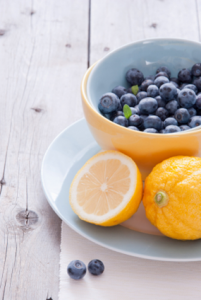 Nutrition Notes
Nutrition Notes
- Greek yogurt is high in protein and a good source of calcium. I used 0%, but higher fat brands will work too (but the cake is already rich tasting – a higher fat brand will increase the calorie count).
- Blueberries are nutritional powerhouses: rich in Vitamin C, fiber, antioxidants, and protective phytochemicals.
- Lemon zest contains a compound called d-limonene, which has been studied for its ability detoxify potential cancer-causing compounds.
- You can lighten up the cake further by using egg whites in place of some of the eggs (about 1/4 cup egg whites for each egg you replace)
Nutrition Per Slice
- 245 calories
- 8 g protein
- 4 g fat (2 g sat)
- 57 mg cholesterol
- 45 g carbohydrate
- 2 g fiber
- 25 g sugars
- 215 mg sodium
- 85 mg potassium
- Iron: 7% Daily Value
- Calcium: 16% Daily Value
More SWEET Recipes . . .
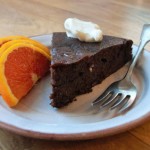 Cakes
Cakes
- Flourless Chocolate Cake
- Rich CHOCOLATE Cake (with beets)
- Lemon Blueberry Cake
- Apple Walnut Cake
- Rich Chocolate Glaze
